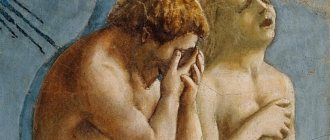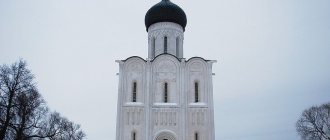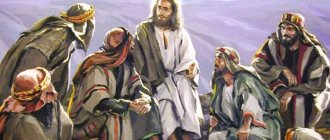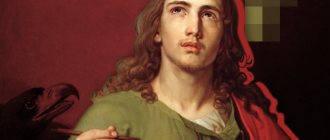A B C D E F G H I K L M N O P R S T U V
Lucas Cranach Elder (1472-1553), German painter and graphic artist of the Renaissance. He probably studied with his father; in 1509 he visited the Netherlands. Lucas Cranach worked in Austria (about 1500-1504), in Wittenberg at the court of the Elector of Saxony Frederick the Wise and his successors (1505-1550), in Augsburg (1550-1552) and Weimar (1552-1553). In his early works, Lucas Cranach acted as a bold innovator: the daring truthfulness of the images, the sharp asymmetry of the composition, the intense and expressive color scheme seemed to anticipate the coming social upheavals in Germany (“The Crucifixion”, 1503, Alte Pinakothek, Munich).
In other paintings of the German painter, on the contrary, a fairy-tale-idyllic principle and a poetic perception of nature dominate, which in many ways served as a further basis for the formation of the Danube school of painting (“Rest on the Flight to Egypt”, 1504, Picture Gallery, Berlin-Dahlem). During the artist’s work in Wittenberg, Cranach’s contradictory creative image was finally determined, reflecting the complexity of the era and the environment that shaped him.
The achievements of Renaissance art and the ideals of Renaissance humanism were implemented by the German artist in the “Altar of St. Catherine” (1506, Picture Gallery, Dresden) and the “Princely Altar” (1510, State Gallery, Dessau), in the paintings “Venus and Cupid” (1509, State Hermitage Museum) , St. Petersburg) and “Nymph of the Source” (1518, Museum of Fine Arts, Leipzig).
Lucas Cranach's friendship with Martin Luther contributed to the appearance in his work of works that expressed the ideas of the Reformation and Protestantism: illustrations for theological works, portraits of Luther, numerous engravings (“The Sermon of John the Baptist,” woodcut, 1516).
At the same time, trends were growing in the artist’s work that anticipated European mannerism of the 1530-1550s: dry Protestant allegories, mannered and cutesy images of the naked female body, made according to the orders of the nobility and multiplied in very large quantities in the artist’s studio. Throughout his life, Lucas Cranach the Elder remained a remarkable master of acutely psychological, monumental portraiture (“Doctor Johann Cuspinian”, 1502-1503, Oskar Reinhart Collection, Winterthur; “Johannes Schöner”, 1529, Museum of Ancient Art, Brussels).
Of Cranach’s paintings on religious themes, the most worthy of attention are: “Our Lady” (St. James’s Cathedral, Innsbruck); “The Crucifixion of Christ” (Alte Pinakothek, Munich); “The Repentance of St. Jerome” (Kunsthistorisches Museum, Vienna); “Madonna and Child under the Apple Tree” (Hermitage, St. Petersburg) and “Madonna in the Vineyard” (Pushkin Museum named after A.S.
Pushkin, Moscow), several images of Adam and Eve under the tree of the knowledge of good and evil (in Berlin, Dresden, Florence and other places), the story of Judith (in Vienna, Dresden, Stuttgart, etc.), “The Harlot before Christ” ( in Munich, Kassel, Nuremberg and Budapest) and others.
Some of Cranach's compositions have cultural and historical significance, as they are performed in the spirit of the Reformation and Protestantism.
Lucas Cranach's paintings of mythological themes “Venus with Cupid”, “Apollo and Diana”, “Cupid and the Bees”, “Hercules with a Spinning Wheel” and others, created by himself or from his workshop, are then repeated in many copies by students of the artist’s workshop.
Portraits by Cranach, large and small, were distributed in many collections and art collections in Europe. Such as, for example, portraits of the Electors, Luther, his wife, Cardinal Albrecht of Brandenburg and the Elector of Saxony Sibylla.
The German painter Lucas Cranach the Elder also painted scenes of princely hunting and genre paintings. Cranach's very few copper engravings (for example, portraits of the Electors, Martin Luther and St. John the Evangelist) indicate the artist's lack of inclination for works of this kind.
But numerous woodcuts made in his workshop enjoyed wide success among the German nobility and burghers.
After the death of Frederick the Wise, the artist remained at the court of Johann the Hard, who replaced his brother on the throne. Lucas Cranach became the mentor of his son, Prince Johann Friedrich, later the future Elector of Saxony.
In 1550, Elector Johann Friedrich, who had fallen out of favor with Emperor Charles V, was captured and then sent into exile.
Faithful to his pupil to the end, Lucas Cranach in 1550 went to Augsburg to the Elector Johann Friedrich, who was in captivity there, and two years later, together with the latter, he moved to Weimar, where he died on October 16, 1553.
The artist Lucas Cranach died the last of the great generation of masters of the German northern Renaissance, outliving Hans Baldung and Hans Holbein the Younger by 10 years and Albrecht Dürer and Matthias Grunewald by 25. The work of Lucas Cranach at one time had a great influence on the painting schools of central and northern Germany.
Note. 1. Click on the thumbnail of the picture ► go to the script page of the original image.
2. Click on the active name of the painting (yellow) ► go to a page with the image of the maximum size in a scalable form and description.
Source: https://smallbay.ru/cranach.html
Christ and the Sinner
“Jesus went to the Mount of Olives. And in the morning he came to the temple again, and all the people came to Him. He sat down and taught them.
Then the scribes and Pharisees brought to Him a woman taken in adultery, and, placing her in the middle, they said to Him: Teacher! this woman was taken in adultery; and Moses commanded us in the law to stone such people: What do you say? They said this, tempting Him, in order to find something to accuse Him of.
But Jesus, bending low, wrote with his finger on the ground, not paying attention to them. When they continued to ask Him, He bowed down and said to them: He who is without sin among you, be the first to throw a stone at her. And again, bending low, he wrote on the ground.
They, having heard [that] and being convicted by their conscience, began to leave one after another, starting from the eldest to the last; and only Jesus remained and the woman standing in the middle. Jesus, standing up and not seeing anyone but the woman, said to her: woman! where are your accusers? no one judged you? She answered: no one, Lord. Jesus said to her, “Neither do I condemn you; go and sin no more.” Gospel of John 8:3-11.
Asknaziy Isaac Lvovich. 1879
Asknaziy Isaac Lvovich (1856-1902). The highest achievements of the art of classicism in Russia and, perhaps, the most fruitful period in the activities of the Imperial Academy of Arts are inextricably linked in the 19th century. In historical painting, the emphasis was on paintings with ancient or biblical subjects.
Let's collect the main verses and highlight the main ideas
The lips exude honey... That is. she has the art of seduction and deception
3. For the mouth of a strange woman drips honey, and her speech is sweeter than oil; 4. but the consequences from it are bitter, like wormwood, sharp, like a two-edged sword; 5. Her feet descend to death, her feet reach to the pit. 6. If you wanted to comprehend the path of her life, then her ways are fickle, and you will not recognize them. (Proverbs 5:3-6)
I forgot God's covenant! Her house leads to death and none of those who enter return to her.
16. to save you from another’s wife, from a stranger who softens her speech, 17. who has forsaken the leader of her youth and forgotten the covenant of her God. 18. Her house leads to death, and her paths to the dead; 19. None of those who entered her return and enter the path of life. (Proverbs 2:16-19)
Sits on high places in the city and calls to you!
13. A woman who is reckless, noisy, stupid and ignorant of anything 14. sits on a chair at the door of her house, on the high places of the city, 15. to call to those passing by on the road, going straight on their own paths: 16. “Whoever is foolish, turn here!” and she said to the feeble-minded: 17. “Stolen waters are sweet, and hidden bread is pleasant.” 18. And he does not know that the dead are there, and that in the depths of the underworld they are called by her. (Proverbs 9:13-18)
Jesus Christ: man or deity? (the story of one painting)
There are many different speculations about what Jesus Christ did between the ages of 13 and 30.
There are many opinions, some say that he worked as a carpenter, others that he led a righteous lifestyle, others that he made a pilgrimage to India, and still others even suggest that he studied witchcraft in Egypt.
But perhaps the point is not where he was and what he did, what he studied and who he knew, but what the person who then created his teaching experienced.
This article is not only about Christ, but also about the artist who for decades worked on his image and the painting “Christ and the Sinner”. Perhaps this story will give someone new thoughts about their life and where to invest it: after all, we have an example of two people who were able to find the answer to this question.
Working on a painting
4,7 5 1
In his work, Vasily Dmitrievich Polenov pays a lot of attention to the Woman and her fate. Perhaps this was influenced by the death of his twin sister. Vera Dmitrievna died young, having made her brother promise that he would create a monumental work, which the artistic community was waiting for at that time.
Work on the painting lasted about twelve years, and Polenov’s first sketches date back to the 60s. In order to paint the landscape plausibly, the artist went on a trip to the Middle East, Syria, Palestine and Egypt, studying the customs, life and colors of ancient Judea.
It is worth adding that such a thorough approach to the matter was apparently instilled in Vasily Dmitrievich by his father, who was an archaeologist.
Already in St. Petersburg, making sketches for the characters in the picture, Polenov dressed the sitters in costumes he brought from his travels, or in those that his wife and sister Elena sewed, according to his own sketches.
The image of Christ was a collective one; he painted it from several sitters. Although, they say that most often his beloved and talented student Isaac Levitan (later a famous landscape painter) posed for him.
Read also: How should a woman dress for church?
Polenov planned to paint a picture on a canvas measuring 3 m x 6 m. Such canvases were not produced in Russia, so he went to Italy to get it. He began sketching the picture with charcoal. And I got so carried away that I ended up with a black-and-white full-fledged version of the work, which the author decided not to cover with oil, but to re-order a canvas of the required size from Italy and start working again.
First show
At the beginning of 1887, newspapers wrote that Polenov was working on the canvas of a large painting, “The Harlot Before Christ.” According to contemporaries, Vasily Dmitrievich did not like this name, and he said indignantly: “No, a misfortune happened to this woman, she is not a harlot.”
The author's title of the painting is “Who is not without sin?” was replaced by censorship with "Christ and the Sinner". At the end of February 1887, the XV exhibition of the Association of Itinerants opened in St. Petersburg. Two paintings, “Boyaryna Morozova” by Surikov and “Christ and the Sinner” by Polenov, attracted particular attention.
Polenov’s painting was first condemned by censors and defined as “harmful to the people.”
The main reason for the condemnation was that Christ Polenov is shown as an ordinary man without a halo.
And indeed, in the picture we see not a saint, but a man of strong build, with the tan of an oriental wanderer, who draws something in the sand.
At the end of the day, he sat down to rest on the threshold of the temple among people from whom he was practically indistinguishable. By the way, thanks to this interpretation of Christ, the Bolsheviks accepted Polenov as one of their own - an atheist. Although he, of course, was not one.
Alexander III allowed the painting to be displayed and even purchased it for his own museum. With the money raised from the sale of the canvas, the artist bought a small plot of land on the upper Oka River and built a large house on it according to his own plans and drawings.
The plot of the picture
The painting is based on a well-known gospel story. The action takes place on the steps of a temple in Ancient Jerusalem. A crowd of angry fanatics brings a sinner to Christ's judgment - a young woman who was accused of adultery.
In front of the crowd are the high priests, who, turning to Jesus, apparently say: we know that your teachings are based on kindness and forgiveness, but according to our laws, an unfaithful wife must be stoned.
What do you say you do with her?
The question was provocative and any of the answer options threatened Christ with death. If he agrees that the woman should be stoned, he will be handed over to the Roman authorities for incitement to murder. If he says that the woman needs to be forgiven, he would be accused of heresy, of deviating from the commandments of Moses.
The story of the salvation of the gospel harlot
Author Victoria Matveeva
12/29/2012 12:30 (Updated: 05/03/2019 23:11)
Religion » Religions of Russia » Orthodoxy
Anyone who has read the Bible carefully remembers the story of this woman. They dragged her to the Teacher in order to hurt Him as much as possible: they say, Moses commanded that such people should be stoned, and You, with your super-forgiveness, decided to violate the Scripture? But the Lord put them to shame, rightly pointing out that among them there is not a single person untouched by evil.
Who was that doomed woman? A prostitute? It is quite possible that she will too. But not a fact. The whole problem is that in Israel things that were completely permissible and acceptable in our country were considered fornication. For example, physical manifestations of love outside of marriage. Even if it was only once, it is nevertheless illegal. And before you become indignant at the “stupidity” of those customs and grumble about the Old Testament, it’s worth thinking about: were the ancients actually wrong? Why have adulterous relationships always been condemned not only by Christians, but also by many other civilizations that were far from backward for their time?
But the thing is that lust, which forces a person to step over morality in order to get satisfaction of his desires, can ultimately destroy any relationship. Hence the transience of “civil marriages,” which are very popular in our time. Without limiting oneself in behavior because of feelings, a person suddenly notices with surprise that these feelings... become boring to him, even if they were initially present. After all, love is born where the carnal is subordinate to the spiritual, and for this it should not prevail over restraint and chastity.
Otherwise, you get a situation similar to that described on one of the diocesan websites: “... the man bitterly told the following about himself. He had many women. He tried to have more sexual relations. With a certain sporting interest in being significant in one's own opinion. “But now,” he said, “I cannot love. Physically, like an animal, I can connect, but I can’t love with my heart... which is why I suffer a lot.”
People for whom fornication becomes the norm become hardened internally, become tough and cynical. It gets to the point where they gradually stop appreciating everything. Even her life and the life of her own children (it’s just chilling when a young girl, giggling, tells her friend how she had an abortion, not being sure who the destroyed child was from). And what a society will turn into, the majority of which will be “ideological” fornicators, is a rhetorical question. That is why, saving the entire God-chosen Israeli society from evil and corruption, the fornicators were destroyed. By order of the Triune God Himself. And since the Will of the Father, Son and Holy Spirit is always the same, then anyone who believes in the inspiration of the Old Testament will have to admit that God the Son was not against their death. Although, of course, he didn’t want her. But sometimes ending the life of the body is the only way to save the soul so that it does not decompose further and does not destroy others.
LitLife
We advise you to take a closer look at the three skillfully executed chapels of this church. Behind the main altar is the Chapel of Sant'Ippolito.
, built around 500.
Behind it are the Chapel of St. Aquilino
, originally conceived as an imperial mausoleum, and
the Chapel of St.
Sisto with its famous, surprisingly well-preserved * early Christian mosaics
and
frescoes
from various eras.
This is the third of the most important basilicas in Milan and the most famous medieval church of the city after Sant'Ambrogio: here, behind a 19th-century façade, lies a fourth-century church! Basilica ** Sant'Eustorgio (50)
with a three-nave interior in the Romanesque style and with the tallest
bell tower
(80 m) has a very special meaning for the Milanese.
Children know it well, since every year on the feast of Epiphany they take part in the procession of the Three Kings (Magi)
. The procession goes from the Milan Cathedral to the basilica, where the relics of those same Magi are kept. These relics were donated to the church in 343 by Emperor Constantine II, who sent Eustorgio to Milan as bishop. Eustorgio built a chapel here. When Frederick Barbarossa conquered Milan in 1162, he stole the relics and gave them to his chancellor, Archbishop Rainald von Dassel of Cologne, who transported them to Cologne. In 1904, a partial return of relics from Cologne Cathedral to Milan took place. Now the relics of the three wise men are kept in the ark under the altar of Sant'Eustorgio.
Elderly townspeople come here every year on April 29 to follow one strange custom at first glance: he orders them to hit their heads on the altar on this day in order to get rid of headaches for the whole year.
The ensemble of the basilica includes beautiful chapels
with luxurious
tombstones
.
Perhaps the best of them is * the Cappella Portinari.
In 1462–1468
the architect Michelozzo erected it by order of the Florentine banker Portinari as a tomb. This is how a masterpiece of the Florentine early Renaissance appeared with beautiful frescoes
by Vicenzo Foppa.
Opposite Sant'Eustorgio in the * Diocesan Museum,
or
Museo Diocesano (51)
, contains about 600 rare ritual objects from the churches of Milan and Lombardy, including bowls, monstrances and reliquaries.
The collection is based on Flemish tapestries
XVII–XVIII centuries
and icons
of the late Middle Ages and the Renaissance (XIV–XVI centuries).
Along with the painting by Francesco Gayeza (1791–1882) “The Crucifixion with Mary Magdalene”
, the most famous work here is the painting
“The Harlot Before Christ”
by Jacopo Robusti (1518–1594), better known as
Tintoretto
.
This artist was the most significant representative of Venetian mannerism (late Renaissance). You can complete your visit with a contemplative walk through the covered gallery,
owned by the museum.
Porta Ticinese
On Corso di Porta Ticinese
, south of San Lorenzo Maggiore, you will find not only impressive buildings from bygone times. This neighborhood simply glows with vitality and creativity. Ideas and trends are born here, and local fashion develops without regard to great designers.
Quarter around Porta Ticinese (52)
, marking the new border of the city, lives brightly and noisily, without conventions, obeying its own laws. Diversity of cultures is welcomed here. Small, quirky shops selling arts and crafts, eccentric fashion and all sorts of trinkets are springing up like mushrooms after rain.
The same casualness reigns in the local pubs and cafes, and in the junk shop you can meet a very curious crowd.
Previously, the Porta Ticinese gate was located on the border of the city. Monumental triumphal arch
dedicated to the victory of Napoleon I at the Battle of Marengo (1800), it was erected in the classicist style in 1801–1814. designed by the architect Luigi Cagnola.
Before the city boundary was moved here, the point of contact between urban and rural lands was marked by the gates of Porta Ticinese Medievale (53)
near San Lorenzo.
This medieval gate, which gives its name to the entire quarter, belonged to a defensive structure built in 1171 after the attack of Frederick Barbarossa. This was the most important city gate. They were restored in the 19th century.
Just as in the old days rulers entered through the gate, today the ceremony of inauguration of each new archbishop begins at this place. Then from here the festive procession heads to the Milan Cathedral.
Around Porta Ticinese the life of free artists is in full swing.
Navigli and Darsena
Navigli Quarter
"Canals"
)
, located southwest of Porta Ticinese, is often called "Little Venice".
The cityscapes that now evoke such a romantic and tranquil mood once had a completely different purpose: Milan was a city for which waterways played a vital role. In the 13th century, the city was penetrated by a whole system of canals, which provided sufficient water supply.
Residents of the city had a direct benefit from this: merchants and artisans could transport their goods and cargo on ships not only within the city, but throughout the country. Thanks to this system, Milan was even connected to the Adriatic through rivers. Large cargo ships were moored in the port of Milan.
When creating the canal system, as in many other important Milanese projects, the matter could not have happened without Leonardo da Vinci. At least they say that he constantly worked to improve the gateway system.
Evening landscape in the Navigli quarter.
Grand Canal (Naviglio Grande) (55)
about 50 km long, like
the Pavia Canal (Naviglio Pavese) (54)
, it was often used to communicate with Lake Maggiore via the Ticino River. Wealthy Milanese citizens used the canals as roads and traveled along them to their country houses on Lake Como and Lake Maggiore.
We recommend taking a walk along the left side of the canal - Ripa di Porta Ticinese.
. In this cozy quarter it seems that time has stopped.
Why did Herod dress Jesus in the honorary uniform of Roman officials? — Orthodox magazine “Thomas”
There are places in the Gospel that are difficult to understand without additional explanation.
This, for example, is the ending of the story about the trial of the tetrarch Herod over Jesus: But Herod and his soldiers, having humiliated Him and mocked Him, dressed Him in light clothes and sent Him back to Pilate. And that day Pilate and Herod became friends with each other, for before they had been at enmity with each other (Luke 23:11-12). What “light clothes” are we talking about, and why did these clothes on the arrested Jesus suddenly make friends with previously irreconcilable enemies?
Today, the perception of clothing as a sign indicating a person’s status has faded into the background in our lives. And it’s not possible to determine, for example, by the way a person is dressed, whether he is a city dweller or a villager, or whether the person in front of you is a married woman or a girl.
However, even today this function of clothing has been preserved in some cases. Thus, thanks to the official uniform, we unmistakably recognize policemen or military officers in a city crowd, and in a monastery we can easily distinguish monks from pilgrims who have come to pray.
In the ancient world, a person's clothing said much more about him. The Pharisees, mentioned many times in the Gospel, stood out in the crowd with long tassels sewn along the edge of their clothes and a unique headdress - tefillin.
It was a square leather box with Bible quotations written on each side. Tefillin were worn on the forehead, attached to a ribbon placed on the head.
It is these brushes and boxes that Jesus mentions when he denounces the Pharisees for their hypocritical attitude towards the Law of God. True, the tassels in the Russian translation of the Gospel are also not entirely clearly called the resurrections of clothes, and the tefillin are called repositories.
Nevertheless, we are talking about them in this place: ... nevertheless they do their works so that people can see them: they enlarge their storehouses and increase the cost of their garments...” (Matthew 23: 1-7).
Harlot before Christ. Asknaziy I. L. 1879. Pay attention to the clothes of the Pharisee in red.
The scarlet robe in which Pilate ordered Jesus to be dressed before handing Him over to his soldiers to mock him also had a very specific meaning. This was the name for the outer clothing of the kings - a purple mantle. True, they did not put on Jesus the royal scarlet robe, but only the red cloak of a Roman soldier. But in combination with the crown of thorns, this clothing became a mocking parody of the king’s vestments.
Light-colored clothing was also iconic. Candidates for public office in the Roman Empire wore white togas. This was a kind of symbol of their purity and non-involvement in any violations of the law. The word “candidate” itself literally means – dressed in white, clean.
Why did Herod order Jesus to be dressed in the honorary uniform of Roman officials?
On the one hand, it was a mockery of Christ and the Jews: Jesus, dressed in white, arrested, as a candidate for the kingdom in a country captured by the Romans.
On the other hand, there is agreement with the verdict of Pilate, who found Jesus innocent. Herod saw the fact that the consideration of this case was sent to him as a sign of respect on the part of Pilate.
And he showed him respect in return - he confirmed his decision in the case of Jesus, dressing Him in the clothes of one innocent of crimes.
And although this dressing in light clothes was also a direct mockery of Jesus, for two millennia it has continued to expose the lawlessness of the death sentence that the Jews passed on the Savior at their Sanhedrin. Two witnesses confirmed Jesus' innocence. One of them is a tetrarch, the other is a procurator.
Blessed Theophylact writes about it this way: “...When Christ was sent back to Pilate, see how the truth shines again. “You,” says Pilate, “brought this man to me as one who corrupts the people; but I do not find anything in Him worthy of death, nor did Herod.
Do you see the testimony of two people, one a ruler and the other a king, completely true? Neither I,” he says, “nor King Herod found any guilt in Him.
What will the Jews say to this? The judges themselves testify that this man is innocent; You, prosecutors, have not brought a single witness: who should you believe? It's amazing how truth wins! Jesus is silent, and his enemies testify in His favor .








